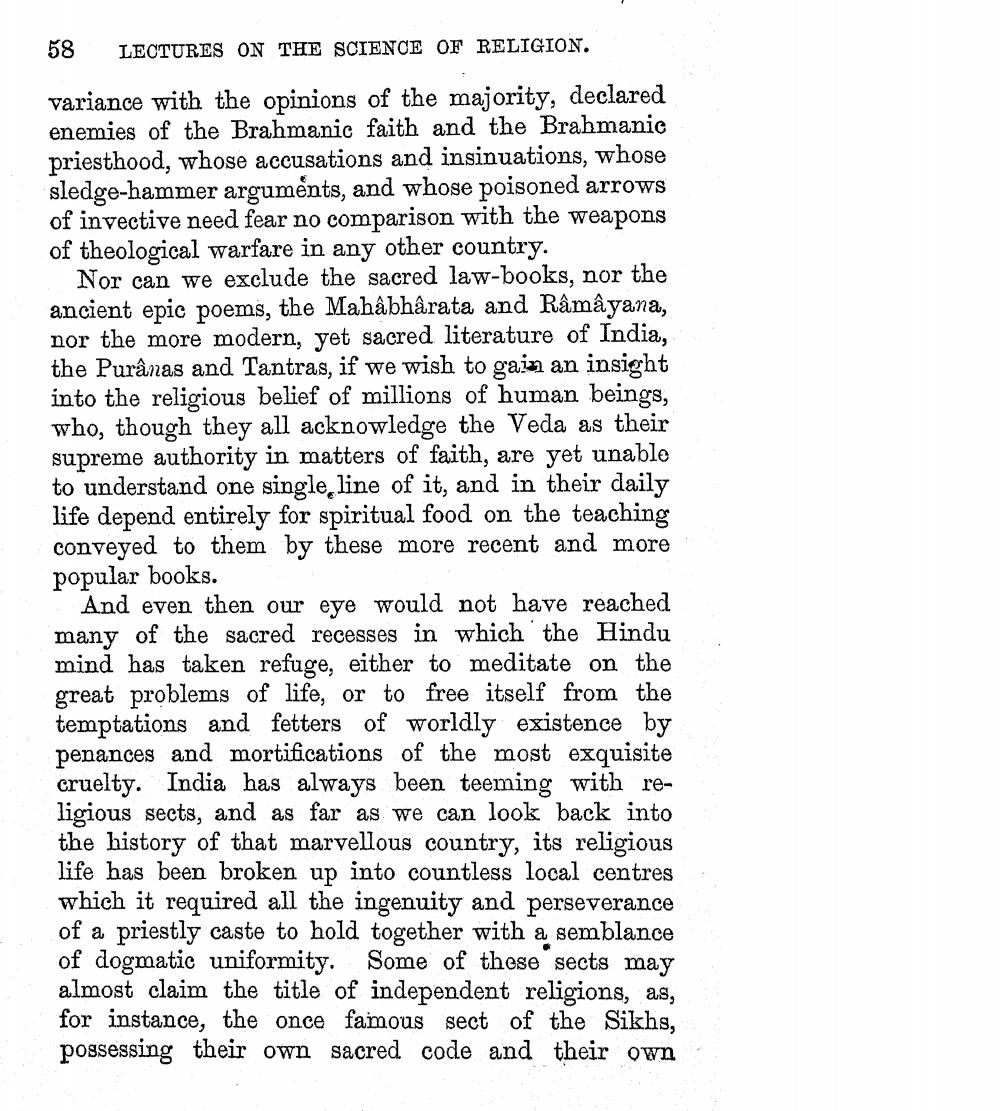________________
58 LECTURES ON THE SCIENCE OF RELIGION. variance with the opinions of the majority, declared enemies of the Brahmanic faith and the Brahmanic priesthood, whose accusations and insinuations, whose sledge-hammer arguments, and whose poisoned arrows of invective need fear no comparison with the weapons of theological warfare in any other country.
Nor can we exclude the sacred law-books, nor the ancient epic poems, the Mahâbhârata and Râmâyana, nor the more modern, yet sacred literature of India, the Purânas and Tantras, if we wish to gain an insight into the religious belief of millions of human beings, who, though they all acknowledge the Veda as their supreme authority in matters of faith, are yet unable to understand one single line of it, and in their daily life depend entirely for spiritual food on the teaching conveyed to them by these more recent and more popular books.
And even then our eye would not have reached many of the sacred recesses in which the Hindu mind has taken refuge, either to meditate on the great problems of life, or to free itself from the temptations and fetters of worldly existence by penances and mortifications of the most exquisite cruelty. India has always been teeming with religious sects, and as far as we can look back into the history of that marvellous country, its religious life has been broken up into countless local centres which it required all the ingenuity and perseverance of a priestly caste to hold together with a semblance of dogmatic uniformity. Some of these sects may almost claim the title of independent religions, as, for instance, the once famous sect of the Sikhs, possessing their own sacred code and their own




